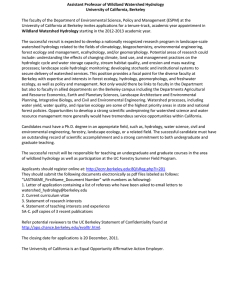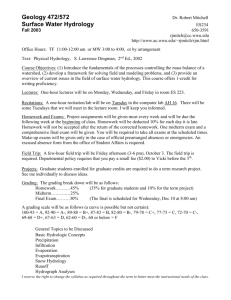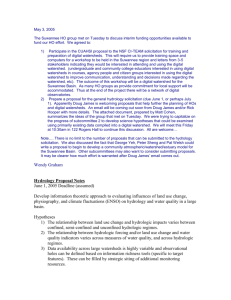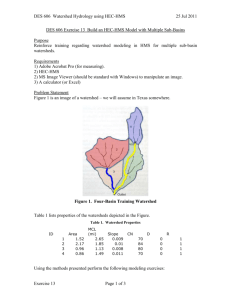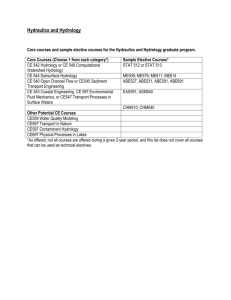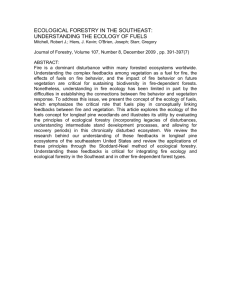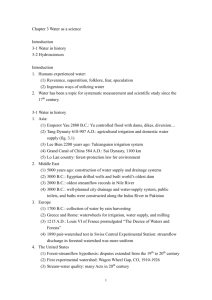Integration/Review exercise for Stream Ecology or
advertisement
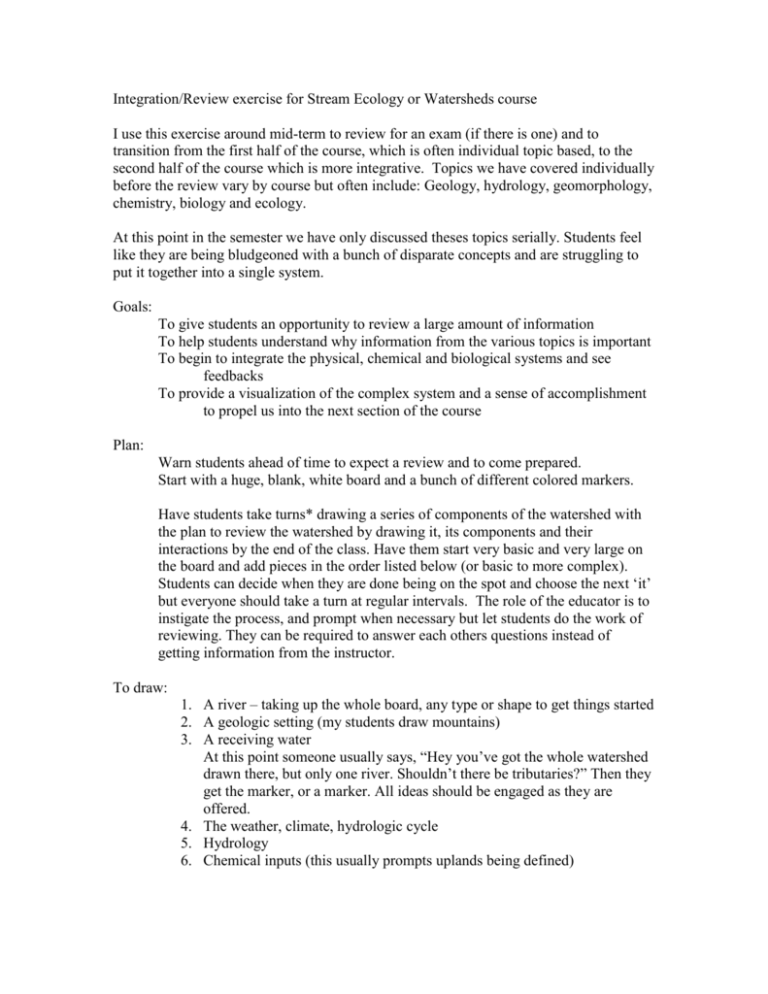
Integration/Review exercise for Stream Ecology or Watersheds course I use this exercise around mid-term to review for an exam (if there is one) and to transition from the first half of the course, which is often individual topic based, to the second half of the course which is more integrative. Topics we have covered individually before the review vary by course but often include: Geology, hydrology, geomorphology, chemistry, biology and ecology. At this point in the semester we have only discussed theses topics serially. Students feel like they are being bludgeoned with a bunch of disparate concepts and are struggling to put it together into a single system. Goals: To give students an opportunity to review a large amount of information To help students understand why information from the various topics is important To begin to integrate the physical, chemical and biological systems and see feedbacks To provide a visualization of the complex system and a sense of accomplishment to propel us into the next section of the course Plan: Warn students ahead of time to expect a review and to come prepared. Start with a huge, blank, white board and a bunch of different colored markers. Have students take turns* drawing a series of components of the watershed with the plan to review the watershed by drawing it, its components and their interactions by the end of the class. Have them start very basic and very large on the board and add pieces in the order listed below (or basic to more complex). Students can decide when they are done being on the spot and choose the next ‘it’ but everyone should take a turn at regular intervals. The role of the educator is to instigate the process, and prompt when necessary but let students do the work of reviewing. They can be required to answer each others questions instead of getting information from the instructor. To draw: 1. A river – taking up the whole board, any type or shape to get things started 2. A geologic setting (my students draw mountains) 3. A receiving water At this point someone usually says, “Hey you’ve got the whole watershed drawn there, but only one river. Shouldn’t there be tributaries?” Then they get the marker, or a marker. All ideas should be engaged as they are offered. 4. The weather, climate, hydrologic cycle 5. Hydrology 6. Chemical inputs (this usually prompts uplands being defined) 7. Chemical transformations in the downstream direction (this usually leads into the next section) 8. Biological players 9. Ecological processes 10. Anything else that has been discussed Next step: Now the setting has been set ask students to draw in feedbacks between components (if they haven’t already) and other processes you’ve discussed. Next ask them to show how this landscape changes naturally over time (whatever time scale you’re interested in, annually for example). Then ask them to show how the system will respond to a big event or climate forcing. ETC. This can obviously be amended to focus on whatever system, time scale, set of processes and feedbacks are most interesting and relevant. The point is to make the assignments progressively harder and less obvious to show students how much they really understand the system and at the same time how complex it is. Step back and admire the work, answer questions, discuss where the course is going next. Students are usually surprised at the result. Several have taken pictures. * My experience with this is that students start out very reluctantly taking turns, and then as they realize they have something to contribute or the person at the board isn’t drawing what they would draw, they want to draw also. It works fine to have many people working at the same time if that’s how the activity progresses.


